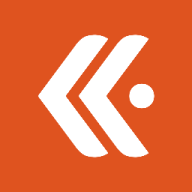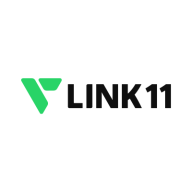

Kentik and Reblaze are competitors in the network management and cybersecurity software market. Kentik has an advantage in network performance optimization, whereas Reblaze excels in cybersecurity for web applications.
Features: Kentik offers SaaS delivery with detailed traffic analysis, DDoS alerting, and a data explorer tool. It aids in network performance, security, and planning. Reblaze provides robust security features like real-time monitoring, DDoS protection, and bot filtering, beneficial for safeguarding web applications. Users appreciate its customizable rules and dedicated support.
Room for Improvement: Kentik could improve by simplifying data visualization processes and enhancing user access control. Expanding actionable insights for network anomalies is suggested. Reblaze can benefit from enhancing its bot management database and increasing WAF feature granularity. Users also seek improved unified monitoring views and session management.
Ease of Deployment and Customer Service: Kentik operates in On-premises and Private Cloud environments and is praised for proactive technical support. Its support team is responsive and often resolves issues promptly. Reblaze, operating on Hybrid and Public Clouds, is noted for ease of integration and offers strong technical support, commended for responsive communication during incidents.
Pricing and ROI: Kentik's tiered pricing model, based on device counts and flow expectations, is cost-effective for large networks but may be high for smaller budgets. Reblaze offers competitive pricing with flexible models, particularly appealing to educational sectors. Both solutions deliver ROI, with Kentik focusing on operational efficiency and Reblaze on cybersecurity enhancements.
In production environments, especially for service providers on IP networks and data centers, Kentik helps in reducing the time to identify and resolve issues.
I have mostly used forums for any support needed because the setup is straightforward and the documentation is quite good.
They have monthly calls and discuss the product roadmap with us to determine what is needed.
Kentik's integration with Kubernetes makes scaling easier.
You can scale as many devices and tests as you want, but you should have a good number of credits in your accounts.
Based on stability, I would give Kentik a nine.
In production, however, dimensioning of the underlying platforms is something to be mindful of.
More work is required to integrate AI for troubleshooting, simplifying root cause analysis, and providing suggested solutions for network issues.
Kentik’s pricing is competitive in the marketplace.
The pricing is good and aligns with the market target.
One of the most valuable features of Kentik, especially for service providers, is its ability to visualize all the BGP peering and the status of the BGP peering platform.
Overall, the ease of use and the fact that it meets client expectations are major positives.
Kentik is easy to use and set up.

Kentik's AIOps Network Traffic Intelligence platform unifies network operations, performance, security, and business intelligence.
With a purpose-built big data engine delivered as public or private SaaS, Kentik captures a high-resolution view of actual network traffic data and enriches it with critical application and business data, so every network event or analysis can be tied to revenue & costs, customer & user experience, performance & risk.
Reblaze provides real-time monitoring, reporting, and botnet protections, enhancing security management with agile customization. Its intuitive dashboard supports efficient decision-making, while flexible rules and geo-blocking ensure security across geographies.
Reblaze is primarily deployed for web application firewall (WAF), DDoS prevention, and bot management, effectively defending against Layer 7 DDoS, phishing, SQL injections, cross-site scripting, and unwanted IP traffic. Supporting both public and private cloud deployments, including Amazon-hosted applications, Reblaze filters malicious activities to safeguard internet businesses. Users appreciate its comprehensive security approach, particularly for mobile app protection through its API and advanced filtering against script injections. Room for improvement includes change management, automation, reporting alerts, session management, and more granular WAF features. Adjustments in pricing and enhancements for bot management and bad IP address databases are sought after.
What are Reblaze's Most Important Features?In finance, Reblaze addresses the stringent demands of data protection. E-commerce platforms benefit from its robust perimeter defenses against typical threats. Healthcare industries utilize its capabilities to secure sensitive patient data, leveraging both real-time monitoring and responsive alert systems to maintain compliance and integrity.
We monitor all Distributed Denial-of-Service (DDoS) Protection reviews to prevent fraudulent reviews and keep review quality high. We do not post reviews by company employees or direct competitors. We validate each review for authenticity via cross-reference with LinkedIn, and personal follow-up with the reviewer when necessary.